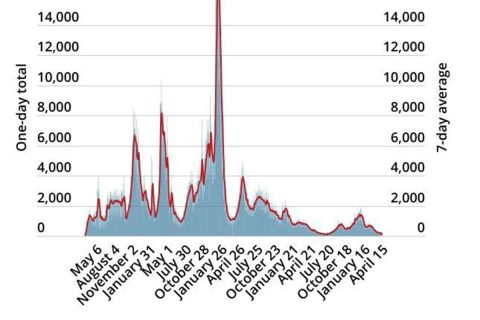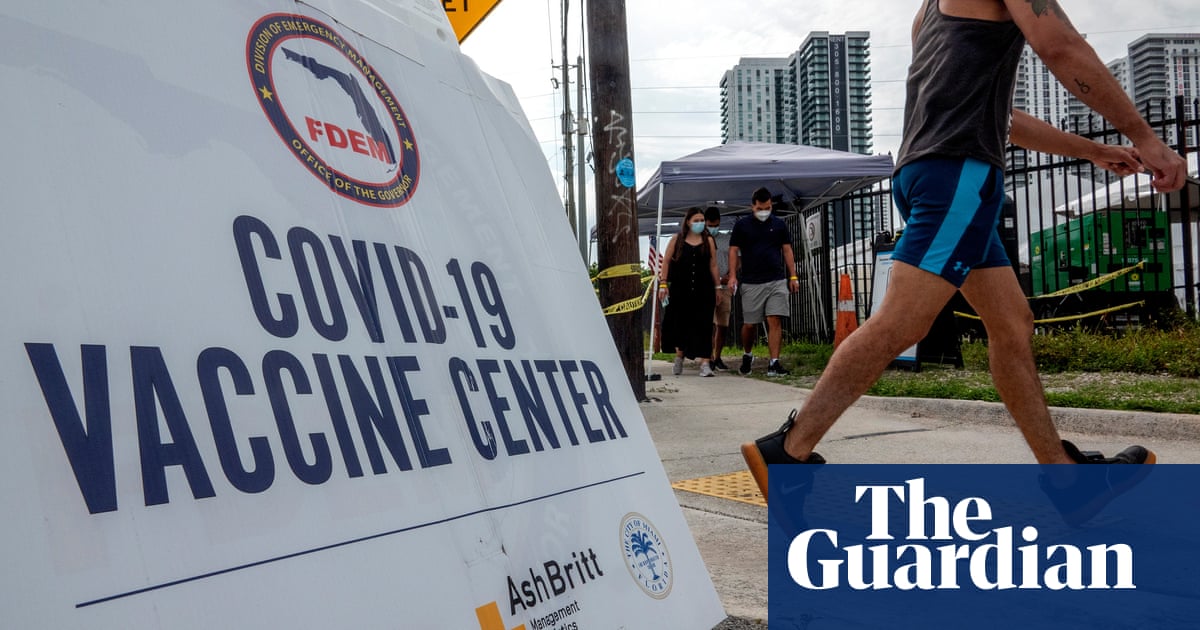While wastewater surveillance data shows COVID-19 cases falling, it reveals other respiratory and stomach viruses are picking up.

www.usatoday.com
COVID-19 is waning but these viruses are still hanging around as we head into early spring
 Adrianna Rodriguez
Adrianna Rodriguez
USA TODAY
As the country begins to thaw out in preparation for spring, COVID-19 cases are finally waning although other viruses are on the rise.
Data from WastewaterSCAN, a network run by Stanford and Emory University that monitors sewage for signs of disease, shows concentrations of the virus have ranged from low to medium in sites across the U.S. and evidence of infections is declining.
“We’re seeing a downward trend, which is fantastic,” said Marlene Wolfe, assistant professor of environmental health at Emory University and program director for WastewaterSCAN. “Hopefully, that pattern continues as we enjoy some warmer weather and longer daylight.”
Unlike testing surveillance, which relies on patients visiting doctors who report positive results, wastewater surveillance passively picks up genetic material of viruses from people's waste to create a picture of how prevalent the disease is throughout the country.
While the wastewater data suggests COVID-19 is easing up, it also reveals other respiratory and stomach viruses are picking up. Experts say these viruses appear to be sticking around as the U.S. approaches warmer months.
Influenza: Is the flu still around?
Spring may be around the corner but the flu – specifically, influenza B – is surging.
While samples of influenza A have decreased since the winter-time peak, influenza B has been detected in 96% of samples, so far, in March compared with 66% of samples in February, according to WastewaterSCAN data.
While it’s normal for influenza A and B to peak at different times during the year, Wolfe noted that influenza B was nearly nonexistent last year.
Although it’s difficult to pinpoint why, experts speculate patterns were disrupted by social distancing and other mitigation measures taken to prevent the spread of disease during the pandemic. During this time, viruses weren't circulating normally because people stayed home and wore masks, impeding the transmission of COVID-19 and other contagious viruses.
The reappearance of this influenza B peak suggests common viruses in the U.S. may be returning to a more reliable, seasonal pattern, Wolfe said.
Parainfluenza: What is it?
Human parainfluenza viruses, or parainfluenza, has also peaked a few times this season, Wolfe said.
The virus – which causes respiratory symptoms such as fever, runny nose, cough, sneezing and sore throat – saw its highest surge in November last year and is seeing another sizeable peak that began in mid-February and has yet to come down.
WastewaterSCAN detected the virus in 55% of all samples nationwide, particularly in the Midwest, Northeast and South. The West is also experiencing an increase but not as significant as in other regions.
The wastewater data is consistent with clinical data from the Centers for Disease Control and Prevention, which shows
positive tests for parainfluenza type 3 are on the rise. Sheree Piperidis, a clinical professor of physician assistant studies at Quinnipiac University, says she’s seeing more cases in doctor’s offices.
Human parainfluenza viruses most commonly cause respiratory infections in infants and young children, according to the CDC. Symptoms are typically mild and children usually can recover on their own at home.
In some cases, parainfluenza can cause more severe diseases, including croup, bronchitis and pneumonia.
With croup, the virus infects the vocal cords, windpipe and bronchial tubes, Piperidis said. Children between 2 and 5 are more likely to develop these severe disease symptoms compared with other age groups.
There is no vaccine or antiviral that treats parainfluenza.
Stomach flu or bug: Norovirus
Norovirus, often called the stomach flu or bug, is also on the rise nationally, Wolfe said, riding out a peak that began in early March.
The virus is the leading cause of foodborne illnesses in the U.S., and accounts for 58% of cases annually. Experts say food typically becomes contaminated by infected people through preparation, not during the growing, harvesting or manufacturing processes.
The CDC reports about 2,500 norovirus outbreaks in the U.S. every year. Outbreaks tend to occur between November and April but in years when there’s a new viral strain, there can be up to 50% more illness.
Norovirus causes over 100,000 hospitalizations and 900 deaths annually, mostly affecting adults 65 and older. It’s also responsible for nearly a million medical care visits for children.
The most common symptoms of the illness are diarrhea, vomiting, nausea and stomach pain. Without available vaccines or antivirals, experts say prevention is the key to staying healthy. Here are their tips:
- Wash your hands well with soap and water after using the toilet or changing diapers; before eating, preparing or handling food; before touching common surfaces; and before caring for people who are sick. The CDC says hand sanitizers can be used in addition to washing your hands with soap and water, but the solution doesn’t work well against norovirus and shouldn’t be substituted for handwashing.
- Handle and prepare food safely by washing fruits and vegetables well, cooking oysters and other shellfish thoroughly and routinely cleaning and sanitizing kitchen utensils and surfaces. It’s important to remember that norovirus is relatively resistant to heat and survives temperatures as high as 145 degrees Fahrenheit.
- Prevent spread while camping or hiking by drinking and cooking with only clean water; keeping food away from bathroom areas, preparing and cooking food properly and washing your hands with soap and water.
Rotavirus: What parents should know
Another stomach virus on the rise during the warmer months is rotavirus, which primarily affects infants and young children.
Wastewater data shows rotavirus began appearing at low levels in September but has been increasing to the high levels recently, Wolfe said.
While it’s possible to get sick any time during the year, cases are more common in the winter and spring. The rotavirus also used to follow a biennial pattern where cases would peak every other year, typically on even number years like 2024.
But as with influenza B, the trend for rotavirus was altered during the past few years by the COVID-19 pandemic, said Jeff Goad, professor of pharmacy practice and associate dean of Chapman University’s School of Pharmacy
"It used to be more predictable," said Goad, who is also president-elect of the National Foundation of Infectious Diseases. "Eventually, we'll get into a stable pattern and we're already starting to see that."
Rotavirus commonly causes severe watery diarrhea and vomiting in infants and young children, which can lead to serious dehydration. In these cases, children often need to be hospitalized. Each year, the CDC says rotavirus leads to more than 200,000 emergency room visits and up to 70,000 hospitalizations in children under 5.
People at greatest risk are young, unvaccinated children between 3 months and 3 years old. The rotavirus vaccine is effective at protecting 70% of children from the disease, and 90% from its severest symptoms.









 Adrianna Rodriguez
Adrianna Rodriguez






